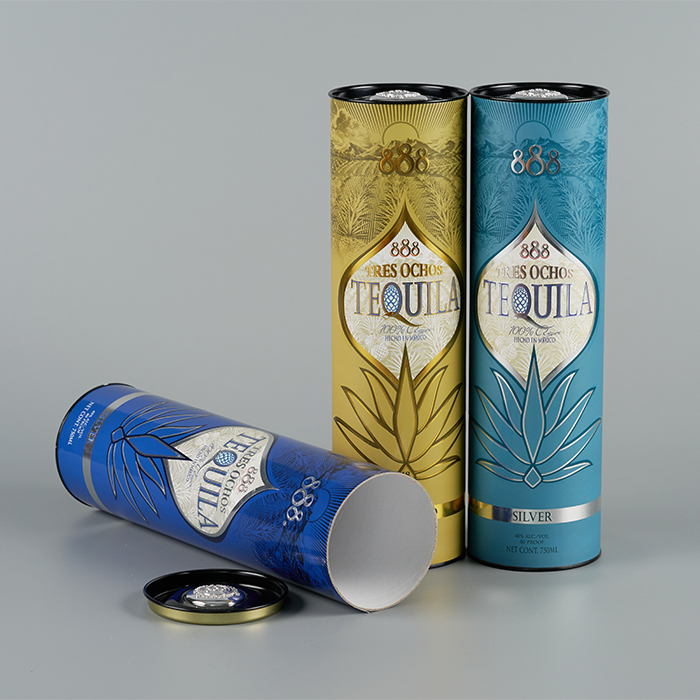
What kind of materials can be printed with UV technology in the industry of paper tubes?

The UV printing is widely used in the paper tube packaging, cardboard cylinder paper tubes, paper container boxes.
According to the contrast between the clear texture and the rough texture of the substrate, the choice of material and the contrast of ink effects are very important to the effect of the printed matter. It is widely used in high-grade printed matter, mainly on flat paper surface.
1. The surface of the matt film of the printed matter can be treated with local varnish by UV
2. The surface of the printed product has already undergone a partial matte oil effect with UV
3. Ordinary paper such as: matt powder paper\coated paper\kraft paper\double-adhesive paper\flat special quality sheets, etc., but due to different ink absorption properties, relatively rough materials need to increase the number of printing coverage layers to achieve a bright effect .
4. Plastic PVC, metal iron plate, ceramics, leather printing, etc. Process adaptability of UV printing 1.UV offset printing Offset printing can be divided into sheet-fed offset printing and web rotary offset printing according to the state of the substrate. Sheet-fed offset printing is suitable for paper, cardboard, plastic sheet and metal foil printing; rotary offset printing has a faster printing speed and is suitable for large quantities of books and newspapers. , Business forms and self-adhesive printing, etc.

The use of UV ink in offset printing mainly considers the following aspects:
ink curing of non-absorbent printing materials;
ink emulsification may hinder the adhesion of ink to the substrate;
the rotary printing machine is fast, and the curing speed of the ink is required to match the printing speed. Matching, especially for self-adhesive printing and securities printing with special inks, the printing effect of UV inks is better than that of resin-based offset printing inks.
Offset printing is mostly used for fine product printing.
UV curing can reduce the loss of small dots and improve the ink transfer rate of overprinting. When selecting ink raw materials, the influence of each component on UV ink should be considered comprehensively to ensure the best printing effect.
Since the ink film of offset printing is generally 2 to 3 μm, although it is good for light curing, the ink film is thin, and the hiding power of the pigment on the printing surface will be affected to a certain extent. Therefore, it is generally necessary to increase the pigment content in the formula; and increase the pigment content, the ink film The light transmission performance of the ink film will be reduced, which is not conducive to UV curing; and the ink film itself is thin. If the wettability of the pigment is not good, the pigment and filler are easily exposed to the surface of the ink film, which will affect the gloss of the ink film. good paint.
When using UV offset printing, you should also pay attention to the following points.
(1) Different inks should be selected for different types of substrates, and the light transmittance of the ink, the curing rate, the covering property of the ink, and the gloss of the surface of the printed matter should be considered comprehensively.
(2) In color printing, various pigments have different abilities to absorb UV photons, and their transmittances are M, Y, C, and BK from high to low, so the curing degree of each color ink is also different. The transmittance directly affects the excitation energy of the photon to the photoinitiator, so it is advisable to arrange the printing color sequence as BK, C, Y, M, so that the ink with poor light transmittance can absorb as many photons as possible to enhance its curing effect.
(3) Using the alcohol dampening system can reduce the surface tension of the ink and promote the curing effect, and during the printing process, the oleophobic area (blank part) of the printing plate can be strengthened with the dampening solution to ensure that the oleophilic area is fully Ink friendly, the hydrophilic area does not get ink. Improving the ink formula and adding corresponding additives can increase the hydrophobicity of the ink, but too strong hydrophobicity will cause ink shrinkage at the edge of the image, loss of fine layers, unclear borders of dots, etc., which will affect the quality of printed products.
(4) UV printing has high requirements on the surface strength of the paper, and if the surface strength is not enough, it is easy to cause roughness failure. When printing with gold and silver cardboard, due to the smooth surface of this kind of paper, the affinity for ink is small, and it is easy to overprint the second color. Pull off the first color ink. Therefore, in UV printing, paper with high surface tension should be selected, the color sequence should be arranged reasonably, and the relevant process parameters in the printing process should be adjusted to avoid and reduce the occurrence of the above phenomena.